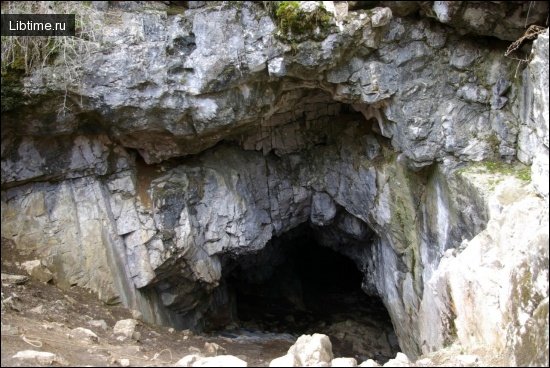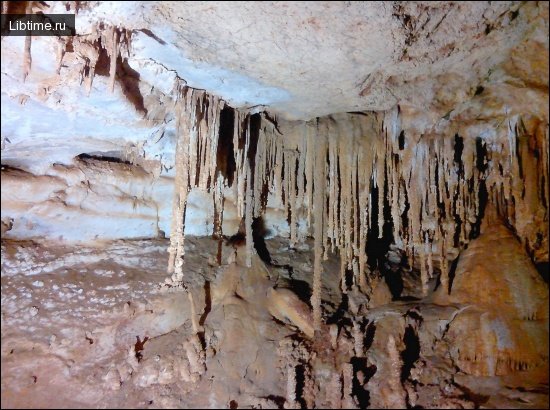Kungur Ice Cave
The Kungur Ice Cave is located on the right bank of the Sylva River near the town of Kungur, Russia. It was formed in gypsum and anhydrite of the Permian system, which alternate with insignificant layers of limestone and dolomite.
There are 58 grottoes in the cave, reaching a height of 20 meters. The largest of them is the Geographers' Grotto, located in the Zaozero part of the cave. Its length is 155 m, width is 32 m, area is more than 3000m2. The total length of all the grottoes of the cave and the passages connecting them is 5600 meters. 
This indicates that the underground cavities were formed as a result of expansion by karst waters of tectonic cracks dissecting the gypsum massif. The floor of many grottoes is blocked with blocks of gypsum that fell from the ceiling. Clay sediments are found somewhere.
There are up to 40 organ pipes in the cave, the most significant of them reach 6m across. Beneath them there are clay-clay sediments and rockslides. Some organ pipes cut through the entire thickness of the gypsum massif and pass into ponors at the bottom of karst sinkholes located at the top of the Ice Mountain.
The organ pipe in the Meteor grotto goes upwards for 50 meters. Four floors of the Kungurskaya cave were established by drilling works and electrical exploration. The air temperature in summer nowhere exceeds 9°, and in winter in the near part of the cave drops to -17°. The lakes of the cave are interesting, there are about 60 of them.
The largest Big underground lake is located in the grotto Friendship of Peoples, its area is about 1200m2, and the greatest depth is 3 meters. Changes in the level of the lakes are closely connected with seasonal fluctuations in the water level of the Sylva River, so the greatest depth and area of the lakes are observed in spring during the flood period.
The water of the lakes is mineralized (up to 2g/l). The ice formations of the Kungurskaya cave are remarkable - stalactites, stalagmites, stalagnates, icing crust, cave cover ice and ice crystals that make the grottoes Brilliantovy, Polar and Dante fabulously beautiful.
Especially beautiful are the crystals that have the form of snowflakes, the size of which reaches up to 10 centimeters across. In the middle of winter, when the air becomes dry and frosty, the walls of the grottoes are covered with ice needles up to 15-20 cm long.
The growth of crystals is observed until April, then comes the period of their melting. The far grottos of the cave, where the temperature remains about 5° throughout the year, are devoid of ice formations.
Kungurskaya cave is visited by a large number of excursionists. The near part of the cave is specially equipped and electrified.


